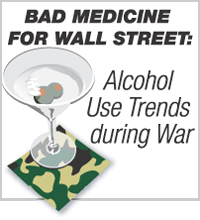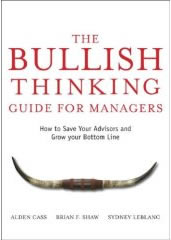 |
|
 |

|
Bad Medicine for Wall Street: Alcohol Use Trends during War
Alden Cass
Joseph Santoro
Joseph Caverly
Competitive Streak Consulting, Inc. |
 |
Abstract
There is a body of evidence indicating that uncontrollable traumatic events can contribute to an increased susceptibility in alcohol use (National Institute on Drug Abuse, 2002; Volpicelli et al., 1999). Additionally, research has supported the notion that alcohol consumption and traumatic events are related, with the most pronounced increase in alcohol use following the trauma, rather than during the actual event (Volpicelli et al., 1990). As traumatic events typically elicit strong emotional reactions in humans, self medication through alcohol use has served as a prominent coping mechanism to decrease painful affect (Epstein et al., 1998).
There is a common perception among business executives of a stigma attached to weakness or painful feelings. Consequently, business executives are reticent to respond to alcohol use surveys for fear their jobs will be threatened if they are truthful in responding. A confidential alcohol use survey using the AUDIT and a demographics questionnaire examining participants' gender, age, income levels, marital status, company location, and type of job were conducted via the internet to encourage truthful responding.
A total of 151 useable surveys were collected and analyzed. The majority of participants were single men, under the age of 30, who do not exercise frequently and made less than $100,000 per year. To examine the findings of the current study, ANOVAs and t-tests were performed to determine if significant differences in problematic drinking behaviors occurred across the pre, during, and post war groups. Interestingly, the findings refuted the “Happy Hour Effect,” (Volpicelli et al., 1990), with significantly more problematic drinking behaviors occurring during than after the war. Additionally, participants from the “during war group” drank more often, binge drank more, and felt more guilt and remorse after drinking.
|
|
 |
|
 |



